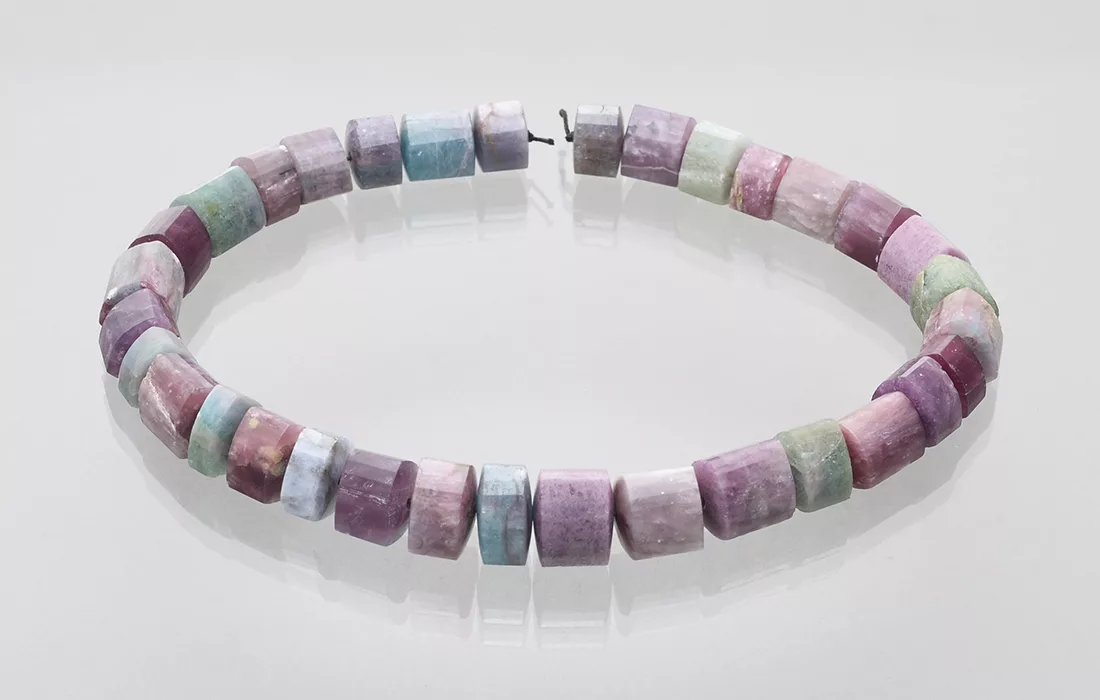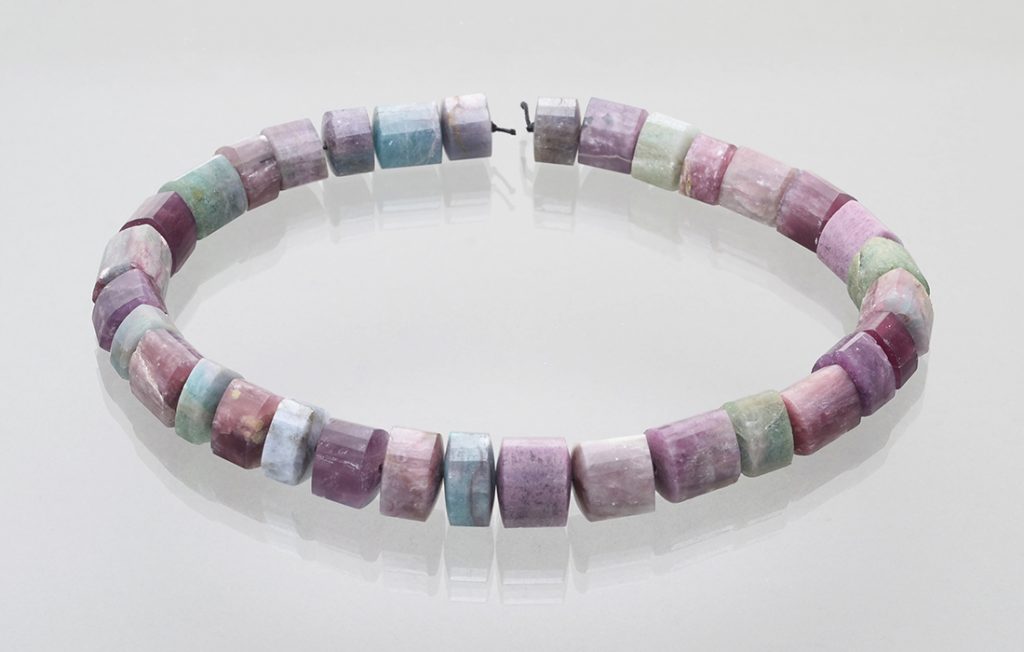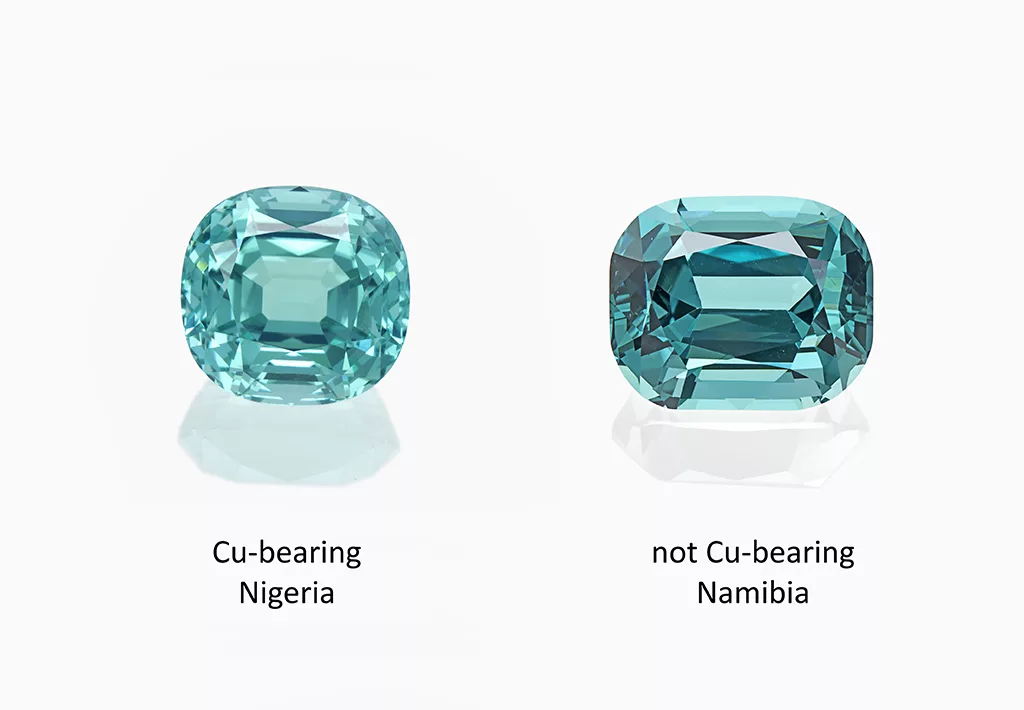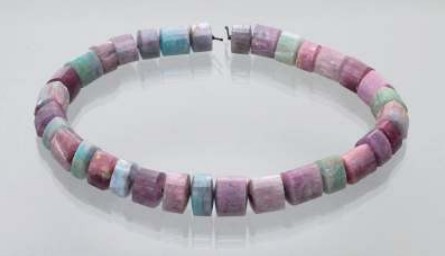
Paraiba Tourmaline Intergrown with Lepidolite Mica
by Dr. M.S. Krzemnicki, first published in Facette 20 (January 2013)

The Swiss Gemmological Institute SSEF recently received a necklace for testing that consisted of thirty-three slightly polished light blue to greenish-blue and purple beads. It had originally been sold as Paraiba tourmaline to our client. The beads were all cut to resemble the typical shape of prismatic tourmalines with a slightly triangular curved outline simulating a series of prism faces. A comparison with our reference samples and literature showed that low-quality material of similar colours is well-known from Paraiba in Brazil, and is generally sold as Paraiba tourmaline. However, our client got suspicious, as she noticed a distinct difference in hardness and toughness of some of these beads and decided to have them tested at the SSEF.
Careful visual observation revealed that the purple beads showed mostly a dull lustre compared to the vitreous lustre known for tourmaline. Furthermore, part of these purple beads showed crushed and pressed edges, as would be expected for materials much softer than tourmaline. Whereas the blue beads were easily identified as Paraiba tourmaline by refractive index, EDXRF and Raman analysis, the purple part of the beads were found to be lepidolite, a lithium-bearing mica (phyllosilicate).
Raman analyses, in fact, showed that the dull purple beads consisted entirely of polycrystalline lepidolite, whereas a number of blue beads with purple zones were actually intergrowths of Paraiba tourmaline with lepidolite. This mica is a common late retrograde replacement of Li-bearing minerals such as Paraiba tourmaline (elbaite) in pegmatites.
To conclude, the described necklace actually represents a mix of Paraiba tourmaline and lepidolite (mica), partially intensely intergrown, and should also be accordingly sold as such. Selling this item as just a Paraiba tourmaline necklace is not appropriate.
See also the publication about this topic in the 2012 issue of the Journal of the Gemmological Association of Hong Kong GAHK, pages 56-58.


